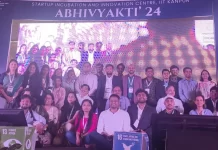

Although my predictive powers don't hold a candle to Carnac the Magnificent, this prediction from my 2017 analytics forecast certainly held true: “I think that we are just at the beginning of the golden age of analytics, in which the value and contributions of AI [artificial intelligence], machine learning [ML] and deep learning will only grow as we accept and incorporate these tools into our businesses.”
As it happens, AI, ML and deep learning didn't just grow up during 2017. They blew up. In 2018, development and use of these technologies will continue to expand and flourish—in so many ways it's hard to quantify. But just as Here Come Da Fudge and Bubblegum were my childhood favorites at Baskin Robbins (famed for its 31 flavors), here are some of the top things I think we'll see among the 31+ flavors of AI in 2018.
AI will learn to fight back
In 2018, Defensive AI will be front and center. We've long talked about how machine learning and AI will help companies to drive differentiation in competitive markets. This applies in the criminal world too, where attackers will use malicious AI and ML to circumvent the ones companies have in place. This arms race, in which criminals arm themselves with “adversarial machine learning,” tops McAfee's 2018 security forecast.
Earlier this year, I wrote about FICO's patent-pending Defensive AI technology, which will usher in systems that will seed their outputs with “faint signatures” to mislead, confuse or identify the attackers learning the AI system's response.
AI will have to explain itself
The need for Explainable AI (XAI) is catalyzed by regulations like the European Union's General Data Protection Regulation (GDPR), which requires explanations for decisions based on scores, including those produced by AI and ML systems. We've long dealt with this challenge in fraud and credit risk decisioning, but in using ML across multiple industries, there are entire sets of proposed explanatory algorithms which are either right, ineffective or flat wrong. Under GDPR, it's imperative that companies can correctly explain the decisioning processes of AI and ML systems.
Here's a telling metric on interest in XAI: As the May 2018 deadline for GDPR enforcement gets closer and closer, views on my nearly year-old blog on Explainable AI have quickly increased.
AI will augment us
The idea that AI and humans will play nice together, rather than battling in a Terminator scenario, is not new. (My favorite of the franchise is, of course, T3.) But in 2018, AI will augment much more of the workplace, not just through better software, but increasingly better versions of ourselves.
Whether it's drawing the information together for us to be superhuman at investigation, data recall, or improving how we learn new topics, AI will augment our ability to process new information. The question will be as to whether our human brains will atrophy, improve or simply evolve to the rate and frequency of data.
AI will get operationalized
In 2018, companies will focus on operationalizing AI, particularly in the cloud, to more easily build, refine, deploy and enhance machine learning environments.
Chatbots will get better at understanding us – and manipulating us
In many aspects of society, it is becoming difficult to determine what is human versus a robot, organically occurring versus automated, real or fake. (This reminds me of the old ad ‘Is it live or is it Memorex?')
In 2018 chatbots will rapidly become more sophisticated, dramatically reducing costs of routine customer care activities, and often improving the customer experience. In the coming year chatbots will quickly understand the tone, content and predicted highest-value conversational paths to meet various objectives. On the dark side, this subtle “engagement” can turn to manipulation through AI that learns the magic words to sway our attitude, actions and possibly elicit en masse reactions.
For now, at least, I'll still go for the real human on the other end of my iPhone.
AI will combine with Blockchain
Beyond its association with cryptocurrencies, blockchain technology will soon record “time chains of events,” as applied to contracts, interactions and occurrences. In these “time chains,” people and the items we interact with will have encrypted identities. The blockchain that is distributed will be the single source of truth, allowing audit trails of data usage in models, particularly in data permission rights.
Here's an example of where the blockchain rubber hits the road. Think about renting a car. Today's you'd go to a traditional car rental agency, or belong to an “alternative” rental organization like Zoomcar, Avis India, Carzonrent. In the future, you will be able walk up to a car to lease it, but you'll do so with a micro-loan for which you are approved to lease the car for, say, an afternoon. This micro-loan will have insurance contracts attached to the chain, and a codified history of the car's history of drivers, events, and maintenance. As you drive through the city and interact with toll roads and parking spaces, all of this information will be automatically recorded and monitored on the blockchain. When you leave the car and lock it, the lease is complete and auditable on the chain.
Beyond that, data event chains will create new opportunities for graph analytics and novel new AI algorithms to consume relationship data at scale. In 2018, we will see new analytics around relationship epochs. Here's a quick definition: Think of your daily interaction with money, people, places and things. Most days are relatively routine but sometimes chains of events occur that have new meaning, perhaps indicating money laundering activity, bust-out fraud, suicide prevention opportunities and many others. Clearly, understanding these webs of relationships of events will add more insight to any analysis of individual components. These webs, or relationship epochs, will feature scoring based on shifting chains and graphs, delivering tremendous predictive power.





